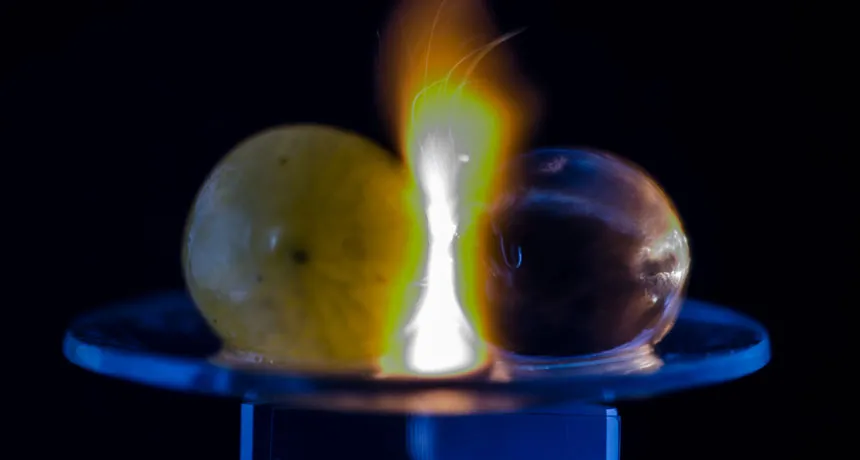Microwaved grapes make fireballs, and scientists now know why
Plasma forms because the fruit is the right size to trap the devices’ electromagnetic waves

GRAPE PLASMA Microwaving grapes creates plasma, and scientists have determined that the effect comes down to a hotspot produced where the two grapes touch. The effect also works with a grape and a hydrogel bead (shown), or two hydrogel beads.
Slepkov Biophotonics Lab/Trent Univ.